This article was medically reviewed by Sarah Gehrke, RN, MS. Sarah Gehrke is a Registered Nurse and Licensed Massage Therapist in Texas. Sarah has over 10 years of experience teaching and practicing phlebotomy and intravenous (IV) therapy using physical, psychological, and emotional support. She received her Massage Therapist License from the Amarillo Massage Therapy Institute in 2008 and a M.S. in Nursing from the University of Phoenix in 2013.
There are 12 references cited in this article, which can be found at the bottom of the page.
This article has been viewed 48,656 times.
People of any age can experience chest pain, and it can stem from a variety of causes. Bouts of pain can occur in the chest because of anxiety or panic attacks. More seriously, chest pain can sometimes indicate problems with your lungs or arteries, or a heart attack. You can stop chest pain from anxiety by controlling and slowing your breathing. For more serious concerns, including heart attacks, visit your doctor or an Urgent Care center immediately.
Steps
Stopping Pain Caused by Breathing
-
1Slow your breathing. People with anxiety frequently experience chest pain because of excessively deep, rapid breathing. This can lead to sharp chest pain close to the heart.[1] To reduce the pain, slow down your breathing and do not take huge, gulping breaths. Take moderate breaths, and make each breath last several seconds.
- As long as the pain you’re feeling is sharp and you can pinpoint it to a specific area, you’re not having a heart attack. Pain from a heart attack spreads and cannot be pinpointed.[2]
-
2Get reassurance from a friend or family member. Ask a friend or family member to calm you down with phrases such as, “You are not having a heart attack,” and “You are not going to die.” If they use a soft, relaxed tone, it will help raise the carbon dioxide level in your blood and reduce your hyperventilation.[3]
- Hyperventilation is a common symptom people experience when going through a panic attack. Hyperventilation causes blood vessels in your chest to contract, causing sharp pain.[4]
- If you experience frequent anxiety or panic attacks, look into seeing a doctor or therapist. Therapy and medication can help decrease anxiety and its effects, and which will reduce chest pain caused by anxiety.
Advertisement -
3Learn to do pursed lip breathing. Pucker your lips as if you are blowing out a candle, and exhale slowly through your lips. Do this until you feel calm and your hyperventilation slows. Breathing this way raises the level of carbon dioxide in your blood and helps relax you.[5]
- Breathing into a paper bag to reduce hyperventilation is not recommended.
-
4See your doctor if you experience consistent chest pain. Your doctor will also be able to evaluate you for a variety of other lung-related problems that cause chest pain. These include a pulmonary embolism (blood clot in a lung) and pulmonary hypertension (high blood pressure).[6]
- Continual chest pain may even be a sign of a collapsed lung.
-
5Ask your doctor to check for pleurisy. If you have no anxiety but experience consistent chest pain, you may have a condition called pleurisy or pleuritis, in which membranes near your lungs become inflamed and rub together. This can be treated with medication.[7]
- If you do have pleurisy, the pain will sharpen and become worse during physical exertion, since you’ll be breathing more heavily.
Diagnosing Chronic Serious Chest Pain
-
1See your doctor if you experience long-term chest pain. If you have chest pain that lasts for days at a time, make an appointment to see your doctor. While this is unlikely to be a sign of a heart attack, it could indicate a number of serious conditions, including heart disease. Describe your symptoms to your doctor, and ask them for an evaluation.[8]
- Long-term chest pain can also indicate health problems in your aorta, lungs, or other internal organs.
- Once your doctor has given you a diagnosis, they’ll be able to provide you with medication to reduce your heart pain.
-
2Ask your doctor about angina. Angina is a medical term for chest pain caused by thick plaque on the walls of your arteries. Eventually it can line the major arteries that carry blood to your heart.[9] If you experience frequent but moderate chest pain, ask your doctor about angina and request a test or evaluation. The condition that causes angina, atherosclerosis, is treated with medication that your doctor can prescribe to you.
- It can be difficult to tell chest pain caused by a heart attack from pain caused by stable angina. In general, heart attacks cause chest pain for a longer duration of time and are more severe than pain from stable angina.[10]
- Pain from a heart attack can begin abruptly and is usually severe, while pain from stable angina tends to build up slowly and be less severe.
- If you think you have angina, your doctor can determine if it is stable or not. Some unstable angina can cause longer-lasting or more severe pain.[11]
-
3Contact your doctor if you have experienced a chest injury with lasting pain. If you’ve recently fallen or otherwise damaged your chest and pain from the injury lasts more than a day or two, you may have fractured or broken a rib. A doctor will be able to perform an x-ray to see if your ribs are damaged.[12]
-
4Inquire about chronic conditions if you experience muscle or bone pain. If the muscles or bones in your chest are frequently in pain, visit your doctor and explain the symptoms to them. If you experience frequent pain in the muscles of your chest, you may have fibromyalgia.[13]
- A condition called costochondritis, in which the cartilage in your ribcage becomes inflamed, can also cause chronic chest pain.
Responding to a Heart Attack
-
1Recognize heart attacks symptoms. Heart attacks occur when a blood clot finds its way to your heart and blocks some of the flow of blood.[14] They can also be cause by a narrowing of the arteries from plaque build-up. Pay attention to any chest pain you experience. Pain from a heart attack is generally spreading and cannot be pinpointed to a single area. Signs of a heart attack include:[15]
- Shortness of breath and sweating.
- Vomiting or nausea.
- Lightheadedness and a fast pulse.
- Pain spreading outward from the chest.
-
2Call 911. Heart attacks are serious and should be dealt with immediately. Don’t have a friend or family member drive you to the emergency room. Call 911 so help is on its way if your condition deteriorates.[16]
-
3Chew 1 aspirin if you experience signs of heart attack. While you’re waiting for an ambulance to arrive, or while en-route to the hospital, chew and swallow a single adult aspirin.[17] Aspirin will thin your blood and reduce chest pain.
- Do not take the aspirin if you are allergic to the medication.
- If your doctor has prescribed you nitroglycerin for this purpose, take it as prescribed.
Expert Q&A
-
QuestionFeeling pain at the center of the chest while pressing. I do half an hour aerobics in the evening. While walking don't find any difficulties. Sometimes the pain spreads over to the left-hand shoulder. Pain only by pressing at the center of the chest. I drink alcohol once or twice in a month.
 Dale K. Mueller, MDDr. Mueller is a Cardiothoracic Surgeon with the Cardiothoracic & Vascular Surgical Associates group in Jacksonville, Florida. Dr. Mueller has over 25 years of experience as a surgeon and he completed his fellowship at Rush-Presbyterian-St. Luke's Medical Center in 1999. Dr. Mueller is a member of the Society of Thoracic Surgeons, Cook County Alumni Association, and Rush Surgical Society. He is board certified by the American Board of Surgeons.
Dale K. Mueller, MDDr. Mueller is a Cardiothoracic Surgeon with the Cardiothoracic & Vascular Surgical Associates group in Jacksonville, Florida. Dr. Mueller has over 25 years of experience as a surgeon and he completed his fellowship at Rush-Presbyterian-St. Luke's Medical Center in 1999. Dr. Mueller is a member of the Society of Thoracic Surgeons, Cook County Alumni Association, and Rush Surgical Society. He is board certified by the American Board of Surgeons.
Board Certified Cardiothoracic Surgeon Reproducible chest pain (pain only by pressing on the chest) is usually not angina but rather musculoskeletal. Such pain should be further discussed with your physician to further differentiate.
Reproducible chest pain (pain only by pressing on the chest) is usually not angina but rather musculoskeletal. Such pain should be further discussed with your physician to further differentiate.
Warnings
- Heart attacks can be fatal. If you believe you’re experiencing a heart attack, don’t wait to see if it gets worse. Call 911 or emergency services immediately.⧼thumbs_response⧽
References
- ↑ https://www.calmclinic.com/anxiety/symptoms/chest-tightness
- ↑ https://www.health.harvard.edu/heart-health/chest-pain-a-heart-attack-or-something-else
- ↑ https://medlineplus.gov/ency/article/003071.htm
- ↑ https://www.calmclinic.com/anxiety/symptoms/chest-tightness
- ↑ http://www.nytimes.com/2008/05/13/health/13real.html
- ↑ https://www.mayoclinic.org/diseases-conditions/chest-pain/basics/causes/con-20030540
- ↑ http://www.normalbreathing.com/chest-pain-when-breathing.php
- ↑ https://www.uchicagomedicine.org/forefront/heart-and-vascular-articles/what-causes-chest-pain-and-when-to-consult-a-doctor
- ↑ https://medlineplus.gov/angina.html
- ↑ https://www.mayoclinic.org/first-aid/first-aid-chest-pain/basics/art-20056705
- ↑ https://www.mayoclinic.org/first-aid/first-aid-chest-pain/basics/art-20056705
- ↑ https://www.mayoclinic.org/diseases-conditions/chest-pain/basics/causes/con-20030540
- ↑ https://www.mayoclinic.org/diseases-conditions/chest-pain/basics/causes/con-20030540
- ↑ https://www.mayoclinic.org/diseases-conditions/chest-pain/basics/causes/con-20030540
- ↑ https://www.health.harvard.edu/heart-health/chest-pain-a-heart-attack-or-something-else
- ↑ https://www.heart.org/en/health-topics/heart-attack/warning-signs-of-a-heart-attack
- ↑ https://www.health.harvard.edu/heart-health/aspirin-for-heart-attack-chew-or-swallow
- ↑ https://www.verywell.com/peptic-ulcer-disease-1745285
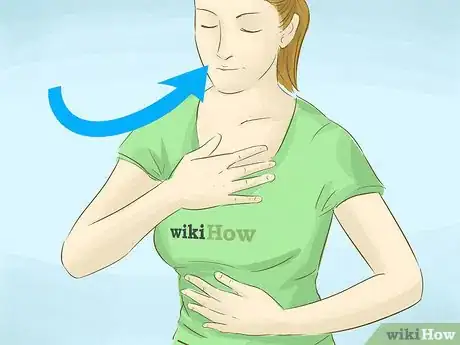
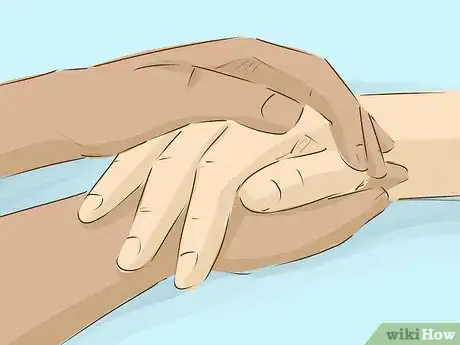
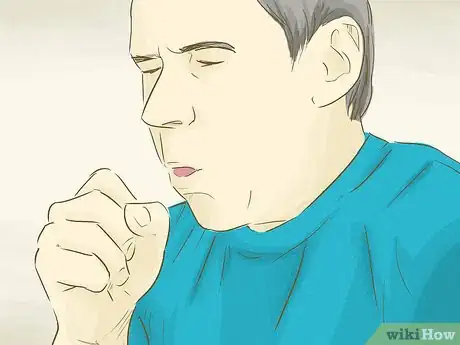
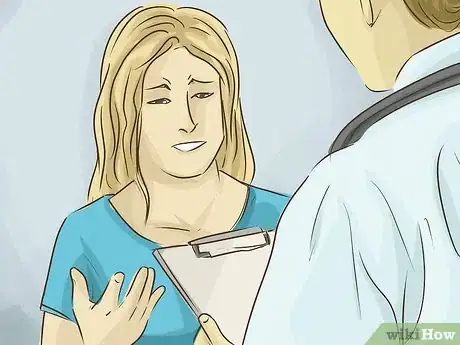



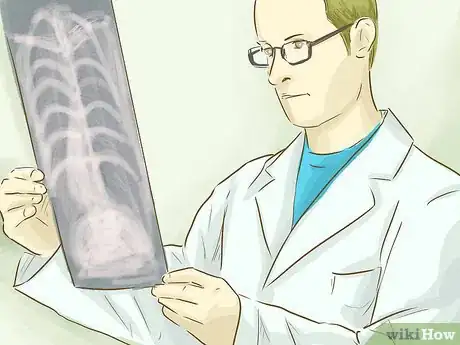


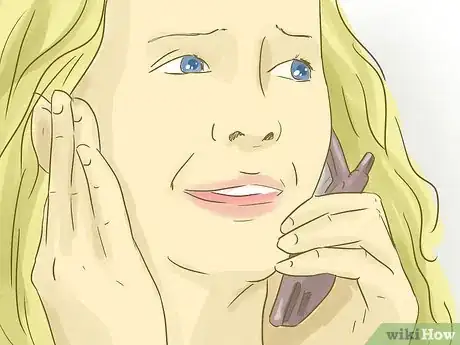
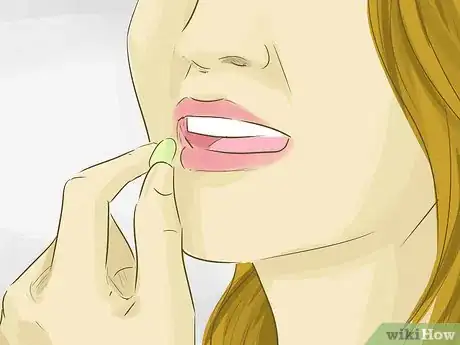

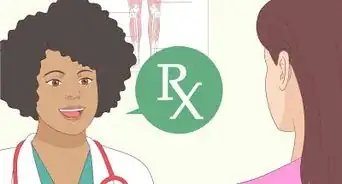
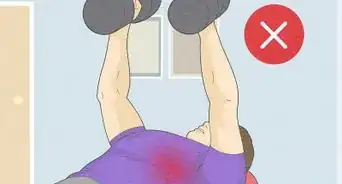






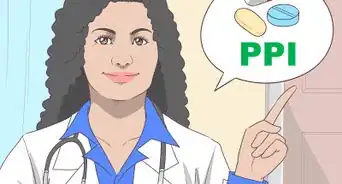
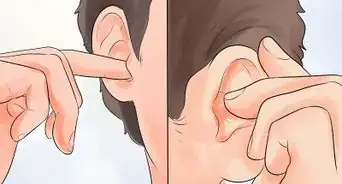
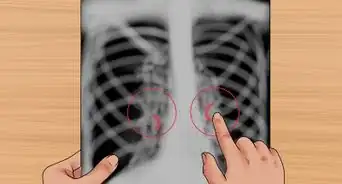








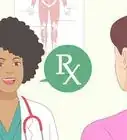
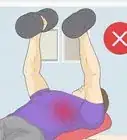




































Medical Disclaimer
The content of this article is not intended to be a substitute for professional medical advice, examination, diagnosis, or treatment. You should always contact your doctor or other qualified healthcare professional before starting, changing, or stopping any kind of health treatment.
Read More...